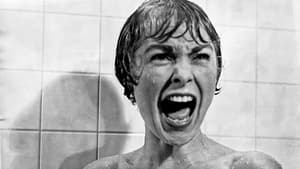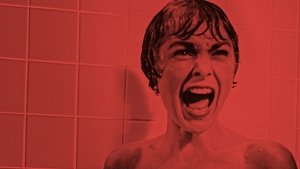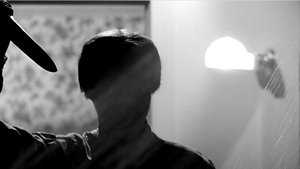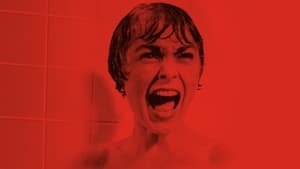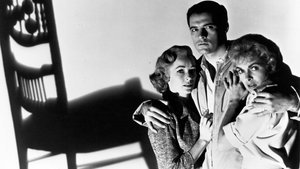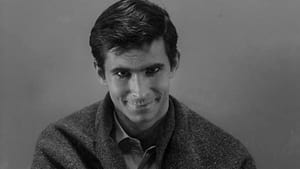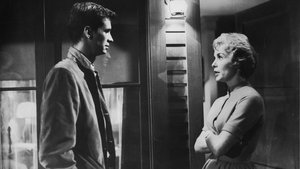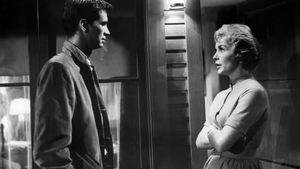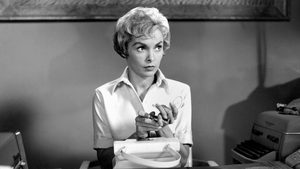Contact: [email protected]
Video Sources 17 Views
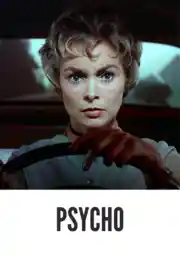
Synopsis




Psycho Colorized Production
Development
The development of the film “Psycho Colorized” was influenced by Robert Bloch’s 1959 novel, which was loosely based on the infamous case of Ed Gein, a convicted murderer and grave robber from Wisconsin. Gein’s actions were a source of inspiration for the character of Norman Bates in the story. Both Gein and Bates were isolated killers who lived in rural areas, had controlling mothers who had passed away, created shrines in their homes dedicated to their mothers, and cross-dressed in women’s clothing. Unlike Gein, Bates was fictional and committed multiple murders before being caught.
Hitchcock’s decision to pursue this novel stemmed from his desire to find fresh material that would help him bounce back from two unsuccessful projects he had previously worked on with Paramount. These projects, namely Flamingo Feather and No Bail for the Judge, had not been able to meet his expectations. Frustrated with the demands of high-profile actors and actresses, Hitchcock had grown wary of relying on others to select potential material for him. However, he trusted a select few individuals, including Robertson, to help him in this process.
Despite Paramount’s rejection, Hitchcock saw potential in the novel and was determined to bring it to the big screen. He went ahead and acquired the rights to the novel for a sum of $9,500. It is said that he even instructed Robertson to purchase all available copies of the book to ensure that its surprises would be preserved. Peggy Robertson, who had been working as Alfred Hitchcock’s assistant for a long time, came across a positive review of the novel in Anthony Boucher’s column called “Criminals at Large” in The New York Times. Intrigued by the review, she decided to show the book to Hitchcock. However, when she approached the studio readers at Paramount Pictures, she discovered that they had already rejected the idea of turning the novel into a film.
The executives at Paramount were hesitant and unwilling to support Hitchcock’s idea for the film Psycho Colorized, so they refused to provide him with his usual budget. In response, Hitchcock came up with a solution by suggesting that the film be made quickly and inexpensively in black and white, using his crew from the television series Alfred Hitchcock Presents. However, the Paramount executives rejected this idea, claiming that their sound stages were already occupied, even though the film industry was experiencing a downturn at that time.
Undeterred, Hitchcock proposed that he would personally finance the project and film it at Universal-International, with his crew from Shamley Productions, if Paramount agreed to distribute the film. As a compromise, instead of his usual director’s fee of $250,000, Hitchcock suggested that he would take a 60% stake in the film negative. Despite objections from producer Herbert Coleman and Shamley Productions executive Joan Harrison, this combined offer was eventually accepted, and Hitchcock proceeded with the project.
Screenplay
James P. Cavanagh, who was a writer for the television show Alfred Hitchcock Presents, initially wrote the screenplay for the movie. However, when Hitchcock read the script, he felt that it lacked the necessary tension and excitement and felt more like a condensed horror story suitable for television. This sentiment was also echoed by one of Hitchcock’s assistants. Despite this setback, Hitchcock decided to give Joseph Stefano, who had limited experience in the film industry, a chance. Stefano had only previously worked on one film, but Hitchcock agreed to meet with him anyway. Surprisingly, the meeting between Hitchcock and Stefano went extremely well, leading to Stefano being hired to rework the screenplay.
In summary, while the screenplay remains faithful to the novel in many aspects, Hitchcock and Stefano made significant changes to the character of Norman Bates and the overall narrative structure to enhance the film adaptation. Another change made by Hitchcock and Stefano was the decision to introduce Bates later in the film. Instead of following the book’s approach of opening with Bates reading a history book, the film begins with scenes from Marion’s life and only introduces Bates after 20 minutes. This alteration allowed for a different storytelling approach and expanded Marion’s story to occupy a larger portion of the narrative.
One notable change made by Stefano was the elimination of Bates’ drinking habit. This decision also required removing the aspect of Bates “becoming” his mother persona while intoxicated. Additionally, Bates’ interests in spiritualism, the occult, and pornography were also omitted from the film. The screenplay for the film adaptation of the novel remains largely faithful, but there are a few significant changes made by Hitchcock and Stefano. Stefano initially found the character of Norman Bates to be unsympathetic, as he is described as middle-aged, overweight, and openly unstable in the book. However, Hitchcock’s suggestion of casting Anthony Perkins intrigued Stefano and made him more interested in the character.
He also points out that in the novel, there is no hotel rendezvous between Marion and Sam. According to Stefano, the conversation between Marion and Norman in the hotel parlor, where she shows a motherly sympathy towards him, allows the audience to shift their sympathies towards Norman Bates after Marion’s murder. In the film, when Lila Crane searches through Norman’s room, she comes across a book with a blank cover, whereas in the novel, this book contains “pathologically pornographic” illustrations. Stefano aimed to subtly hint at something being amiss without being too explicit. Truffaut, in his discussions with Hitchcock, criticizes the novel for including detailed conversations between Norman and “Mother” and explicitly stating what Mother is doing at different times.
The female protagonist’s name was altered from Mary to Marion because there was already a real Mary Crane in Phoenix. The budding romance between Sam and Lila was also changed in order to focus more on the mystery at hand. Instead of Sam explaining Norman’s issues to Lila, a psychiatrist was used in the film. The novel is more graphic than the movie, with Marion being beheaded in the shower instead of stabbed. Other changes include Marion’s earring being replaced with a piece of paper, and Arbogast’s death location being shifted to the stairwell. These alterations were made to enhance the suspense and keep the audience guessing. Janet Leigh noted that these changes gave Hitchcock more creative opportunities with his camera work.
Pre-production
Paramount, obligated by their contract with Hitchcock to produce another film, initially opposed the idea of Psycho Colorized. They had expected Hitchcock to work on a film starring Audrey Hepburn, but her pregnancy caused the project to be abandoned. Paramount deemed the source material of Psycho too disturbing and unsuitable for the big screen, insisting on a more typical Hitchcock mystery thriller instead. Despite their disapproval, Hitchcock decided to fund the film himself through his own production company, Shamley Productions, and shot it at Universal Studios. The iconic Bates Motel and house sets, built on the same stage as Lon Chaney’s The Phantom of the Opera, are still standing at Universal Studios today. To keep costs down, Hitchcock chose to film Psycho in black and white, with the added benefit of toning down the violence in the infamous shower scene.
In order to keep expenses at a minimum and due to his familiarity and trust in their abilities, Hitchcock decided to bring on board many of the crew members from his television show, Alfred Hitchcock Presents. This included cinematographer John L. Russell, set designer George Milo, script supervisor Marshall Schlom, and assistant director Hilton A. Green. Additionally, he enlisted the talents of his regular collaborators such as Bernard Herrmann for music composition, George Tomasini for editing, and Saul Bass for the title design and storyboarding of the iconic shower scene. The total cost of hiring his trusted crew came to $62,000.
Hitchcock’s strong reputation allowed him to secure Leigh for a fraction of her usual fee, as he only paid her $25,000. This reduced payment was justified by Hitchcock’s claim that Leigh still owed Paramount one more film from her previous contract, which she had signed back in 1953. Interestingly, Leigh agreed to this offer without even inquiring about her salary, solely basing her decision on having read the novel. On the other hand, Perkins, her co-star, accepted a slightly higher payment of $40,000. It is worth noting that both actors were well-established and had a proven track record of attracting audiences to the theaters.
After the initial release of the film, Paramount continued to distribute it. However, four years later, Hitchcock decided to sell his shares in Shamley Productions to MCA, Universal’s parent company. As a result, his next six films were produced and distributed by Universal Pictures. Another four years passed before Paramount ultimately sold all rights to Universal.
Filming
The film Psycho Colorized, which was produced and financed independently by Hitchcock, was filmed at Revue Studios, the same location as his television show. The production had a tight budget of $807,000 and filming took place from November 11, 1959, to February 1, 1960. Shooting typically started in the morning and wrapped up by six p.m. or earlier on Thursdays, when Hitchcock and his wife would have dinner at Chasen’s. Most of the film was shot using 50 mm lenses on 35 mm cameras to create a visual experience similar to human vision, enhancing the audience’s immersion in the story.
Prior to the start of filming in November, Hitchcock sent Green to Phoenix to search for suitable filming locations and capture the opening scene. The initial plan was to film an aerial shot of Phoenix that gradually zoomed in on the hotel window where Marion and Sam were having a passionate moment. However, the helicopter footage turned out to be too shaky, so it had to be combined with footage shot in the studio. In addition, another crew filmed day and night scenes on Highway 99 between Gorman and Fresno, California, to be used when Marion is driving from Phoenix. There is also footage of her driving into Bakersfield to exchange her car.
Additionally, the filming location for the scene where she is found sleeping in her car by a highway patrolman was provided by them. During a street scene shot in downtown Phoenix, it was noticed that Christmas decorations could be seen in the background. Instead of reshooting the scene, Hitchcock decided to incorporate a graphic at the beginning of the film indicating that it was “Friday, December the Eleventh”.
In addition to capturing various scenes on location, Green also made sure to document a comprehensive list of 140 different sites that would be used for future recreations in the studio. This list encompassed a wide range of places, including numerous real estate offices and homes, including those owned by Marion and her sister. Moreover, Green went above and beyond by discovering a young woman who resembled Marion and meticulously photographing her entire wardrobe. This attention to detail would prove invaluable for Hitchcock, as it allowed him to ensure that Helen Colvig, the wardrobe supervisor, could accurately replicate the desired appearance. Furthermore, the iconic Bates house was crafted with inspiration from Edward Hopper’s painting entitled “House by the Railroad.” This whimsical portrayal, depicting a Victorian-style home from the Second Empire era, served as the blueprint for the Bates house, which was constructed based on the actual residence located at 18 Conger Avenue in Haverstraw, New York.
